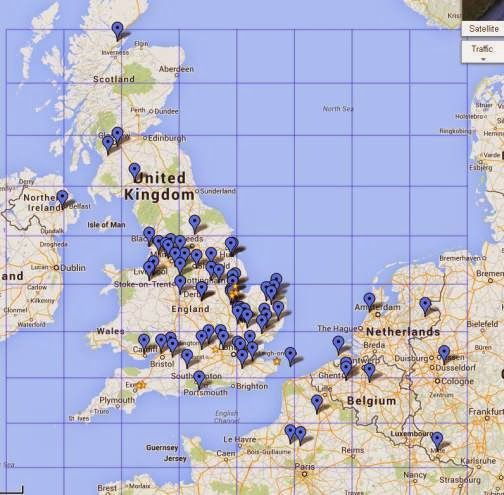N1MM Contest Logging Programme - part 1
There is no doubt in my mind that if you are
interested in Contests, even in a small way, then computer logging is
a skill that needs to be seriously considered. Having entered a
couple of RSGB UKAC contests using paper logs and then transcribing
to the Contest web site I found that it was a laborious process that
is prone to copying errors.
In SDARS our VHF contesters are very keen and
active. The logging software that most of us use for VHF and up is
Minos because it is recommended by the RSGB, provides an entry in
the required format and because a lot of Club members use it, help
and assistance is always at hand.
Minos is however primarily for VHF use, when it
comes to HF I have decided to settle on using N1MM logging software.
The reasons for this are;
It's free. I am not a fanatical Contester so
spending money on something that gets infrequent use is just not
viable.
It is quite similar to Minos in use so the
learning curve is not too steep.
It provides an entry in Cabrillo format,
required for many HF Contest entries.
Having said that it is similar to Minos to use
only scratches the surface though. N1MM is an extremely complex and
complicated programme when you look at it in more detail. Whereas
Minos is purely logging software, N1MM also incorporates so many
extra functions including rig and rotator control that you would need
to be a dedicated contester to master it completely. I will not even
try and cover N1MM in depth here but will try to explain how I use
the basic functions within it.
It is important to install the updates immediately
after the first full install but after that it is only necessary once
every now and then. Installation is straight forward and should go
smoothly. Only the latest update has to be installed so ignore the
others.
If you start N1MM without connecting your
rig to the computer with a CAT cable you will receive an error
opening port message when opening the software. Don't Panic –
To use the basic logging programme you do not need to be connected to
the radio. You will probably find the default band selected is 20
meters. To change this simply type in the “call sign” entry box
“3.5” and hit enter for 80 meters. If the mode is not correct
just type in “CW” or “PHONE” and hit enter again.
The first task is to select the correct Contest
Format. Take your time on this as it was where I made several
errors the first time I used the programme and mistakes are difficult
to remedy later.
From the top menus select “File” then “New
log in Database”.
This brings up a set up box. The first item is
“Log Type”. There are loads of contests to select from and
getting the correct one is very important. For the RSGB UK CC contest
scroll down until you get to “RSGB80MCC”.
Some are not as obvious, the Cub Sprint is “EUSCW”
so look at the rules on the actual contest web site and you might
find the format to select there.
Selecting the correct Contest format is important
as it opens up the correct information entry boxes in the main window
that each specific Contest requires.
The rest of the set up window is more straight
forward and contains a lot of your station information in much the
same way as Minos except with an HF slant.
You are now pretty much ready to start a
Contest using N1MM as a simple logging aid. As in Minos you enter
Call sign being worked then Tab across to the next field until all of
the required field are filled in and then hit Enter.
Many VHF contesters are amused to find that the
Report defaults to 599 in HF Contests. At least in N1MM you can enter
a different RST but I'll save my thoughts on that topic for another
missive!
At the end of the Contest when it comes time to
produce your entry, check with the Contest rules to make sure you
know what format is required. Most of my Contest activity is for RSGB
Contests and they require a Cabrillo file. To produce one Simply go
to “File” menu and select “Generate Cabrillo File”. Make sure
you know where you saved it too as this is what you send to the RSGB.
Essentially much of this simple utilisation of
N1MM is very similar in operation to Minos. The fun starts when you
connect your Radio to the computer and delve a bit deeper into the
software's capabilities.
When you connect your radio to the computer
using a CAT cable or interface then N1MM becomes very interesting
indeed. The software will then track your operating frequency and
mode automatically. If you connect a WinKey or similar keying device,
you can send CW from the computer keyboard or from Macros within
N1MM. However this is where most of the problems start to surface.
Interfacing your computer, radio and software so that they all “talk”
to each other is not always easy especially if you already use
certain ports on the computer while using other software like Ham
Radio Deluxe. If using more than one programme at a time always open
up N1MM first and always turn your radio on and select VFO A, the
correct band and mode before starting N1MM.















